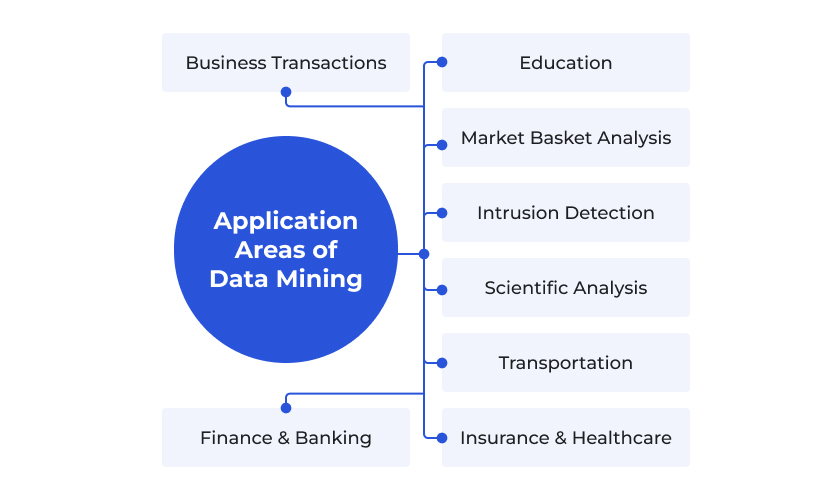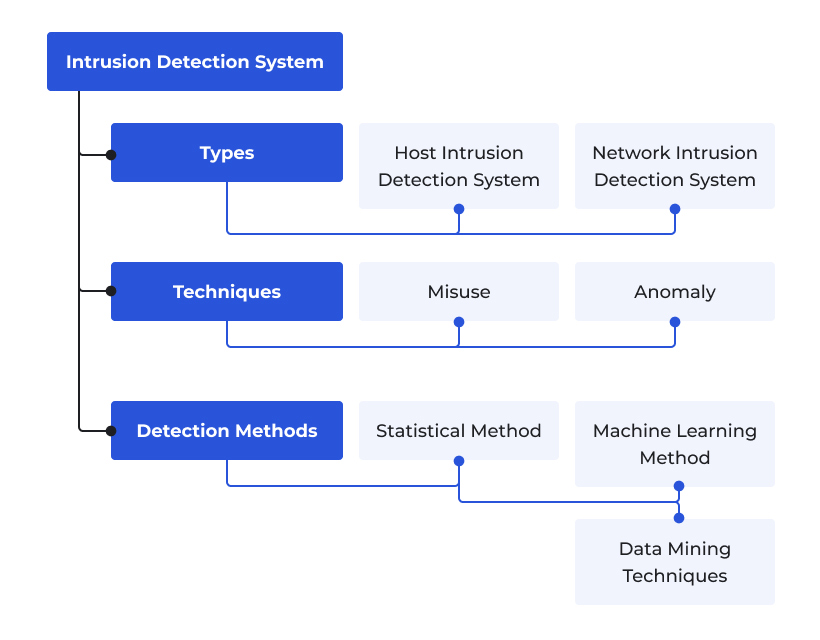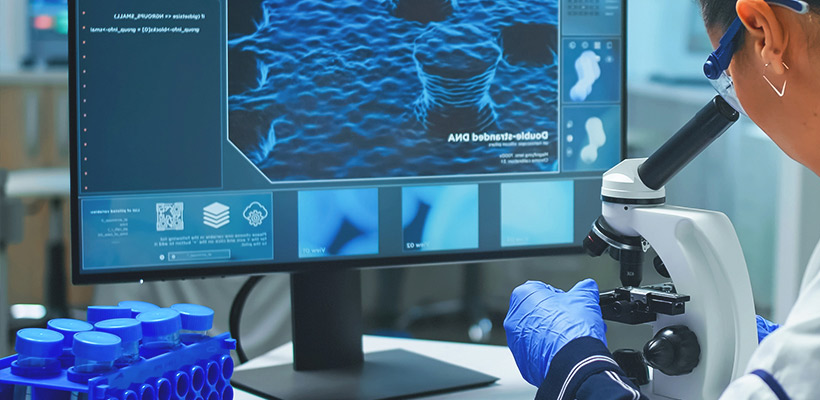In the ever-evolving realm of healthcare, data becomes more than just numbers and charts, turning into a force that drives decision-making, improves patient care, and optimizes workflows. Yet, what precisely is data mining in healthcare? It encompasses the continual collection, assessment, and analysis of health data, turning the process into a foundation for shaping patient outcomes and enhancing the efficiency of healthcare systems globally.
In an era where the healthcare sector is responsible for nearly 30% of global data volume and is expected to experience an annual growth rate of 36% by 2025, the significance of data mining has never been more evident. With the landscape being so data-centric, over 90% of healthcare leaders unanimously agree that access to top-tier data across all dimensions of healthcare organizations is essential for achieving optimal performance.
With these numbers in mind, let's delve into the core of the medical data shift, recognizing that every byte and bit harbors the potential to redefine the delivery of care and operational standards.
What Is Data Mining?
Data mining also referred to as knowledge discovery in data (KDD), entails the process of uncovering patterns and valuable insights from extensive datasets.
With the advancement of data warehousing technology and the proliferation of big data, the adoption of data mining techniques has surged in recent decades. These techniques aid companies in transforming raw data into actionable knowledge representation. However, despite ongoing technological advancements aimed at handling large-scale data, leaders still need help with scalability and automation.

Data mining has revolutionized organizational decision-making by enabling insightful data analyses. The techniques underlying these analyses serve two primary purposes: describing the target dataset or predicting outcomes through machine learning algorithms. These methods are instrumental in organizing and filtering data, thereby revealing relevant information ranging from fraud prevention to user behaviors, bottlenecks, and security breaches. When coupled with data analytics and visualization tools such as Apache Spark, delving into the realm of data mining has become more accessible than ever, facilitating expedited extraction of relevant insights. Furthermore, advancements in artificial intelligence continue to drive adoption across various industries.
General Data Mining Business Application Areas
Technically speaking, data mining is the computational process of studying data from various perspectives, angles, and dimensions, then organizing and summarizing it into meaningful information. This technique can be applied across diverse types of data sources, including data warehouses, transactional databases, relational databases, multimedia databases, spatial databases, time-series databases, and the web.
In the knowledge economy, data mining provides competitive advantages by generating essential insights necessary for swiftly making valuable business decisions, even amidst vast quantities of available data. Across various application domains, data mining has yielded numerous measurable benefits. Let's now explore different data mining applications.

Scientific analysis
Each day, scientific simulations produce vast amounts of data, ranging from nuclear laboratory findings to data related to human psychology. The data mining process offers the capability to analyze such data, but the rate at which new data is captured and stored often outpaces the speed at which old data can be analyzed. Examples of scientific analysis include sequence analysis in bioinformatics, classification of astronomical objects, and medical decision support.
Intrusion detection
Network intrusions, which involve any unauthorized activity on a digital network, often result in the theft of valuable network resources. Data mining techniques play a crucial role in detecting network intrusions, attacks, and anomalies. These techniques aid in selecting and refining pertinent information from extensive datasets, facilitating the classification of relevant data for Intrusion Detection Systems. These systems generate alerts for network traffic regarding foreign intrusions in the system, including the detection of security violations, misuse, and anomalies.

Education
In the education sector, data mining employs the Educational Data Mining (EDM) method to generate patterns useful for both learners and educators. Educational tasks performed through data mining involve predicting student admissions and profiling, evaluating student performance, assessing teachers' teaching effectiveness, developing curricula, predicting student placement opportunities, and more.
Business transactions
Transactions within every industry are recorded indefinitely, often time-stamped and encompassing both inter-business deals and intra-business operations. For businesses striving to thrive in a fiercely competitive environment, the paramount challenge lies in effectively utilizing this data within a reasonable timeframe for competitive decision-making. Data mining can help with analyzing these business transactions, aiding in the identification of marketing approaches and decision-making strategies.
Examples include:
- Direct mail targeting
- Stock trading and statistical analysis
- Customer segmentation
- Churn prediction
- Market basket analysis, which delves into the purchasing patterns of supermarket buyers to facilitate targeted promotions and sales offers.
Sales and marketing initiatives benefit from data mining concepts to enhance customer service, improve cross-selling opportunities, and boost direct mail response rates. Moreover, data mining can help with customer retention through pattern identification and prediction of potential defections, as well as in risk assessment and fraud prevention endeavors.
Research
Data mining techniques excel in research applications, offering predictive analysis, classification, clustering, association, and data grouping functionalities. Rules generated by data mining are instrumental in technical research, where a training/testing model is often employed to measure the precision of proposed models.
Examples include the classification of uncertain data, information-based clustering, decision support systems, web mining, domain-driven data mining, and applications in IoT and cybersecurity.
Financial/banking sector
Credit card companies leverage data mining to identify potential customers for new credit products, detect credit card fraud, identify loyal customers, extract customer-related information, and determine credit card spending by customer groups.
Transportation
Data mining assists diversified transportation companies in identifying prospects for services and optimizing business cycles. It facilitates the determination of distribution schedules among outlets and the analysis of loading patterns.
Healthcare and insurance
In the pharmaceutical sector, data mining enables the examination of sales force activities to enhance the targeting of high-value physicians and optimize promotional activities. In the insurance sector, data mining aids in predicting customer behavior, identifying patterns of risky behavior and detecting fraudulent activities. Examples include claims analysis, identification of successful medical therapies, and characterization of patient behavior to predict office visits.
Explaining How Data Mining Works in Healthcare
Data mining in healthcare involves the application of advanced analytical techniques to vast datasets comprising patient records, medical images, clinical notes, and more. Through data mining, healthcare organizations can uncover hidden patterns, correlations, and insights within these datasets, enabling informed decision-making, personalized patient care, and improved clinical outcomes. The process typically begins with data preprocessing, where raw healthcare data is cleaned, transformed, and prepared for analysis. Next, various data mining algorithms are applied to the prepared datasets to extract valuable knowledge and predictive models.
In the clinical environment, data mining plays a pivotal role in numerous applications, enhancing the delivery of healthcare services and supporting medical professionals in decision-making. One such application is clinical decision support systems (CDSS), where data mining techniques analyze electronic health records (EHRs), medical literature, and patient data to provide healthcare providers with evidence-based recommendations and treatment guidelines. For example, data mining tools can analyze patient demographics, medical history, and symptoms to assist clinicians in diagnosing diseases, selecting appropriate treatment options, and predicting patient outcomes.

Another example of data mining in the clinical setting is predictive modeling for early disease detection and risk assessment. By analyzing large-scale healthcare datasets, data algorithms can identify patterns indicative of disease onset or progression, enabling proactive interventions and preventive care strategies. For instance, predictive models built using the data mining process can help identify individuals at high risk of developing chronic conditions such as diabetes or cardiovascular disease, allowing healthcare providers to intervene early with targeted interventions, lifestyle modifications, and disease management plans.
Additionally, data mining can be used to analyze medical imaging data, such as X-rays, MRIs, and CT scans, to assist radiologists in detecting abnormalities, diagnosing diseases, and monitoring disease progression. Through automated image analysis and pattern recognition, the data mining process can enhance the accuracy and efficiency of medical image interpretation, leading to earlier detection of diseases and improved patient outcomes.
Healthcare-Specific Data Mining Use Cases
Data mining takes center stage in modern healthcare, facilitating the extraction of valuable insights and knowledge from vast and intricate healthcare datasets. This process involves the application of sophisticated analytical techniques and algorithms to unveil patterns, relationships, and trends inherent within healthcare data. The overarching role of data mining in healthcare can be outlined as follows
- Clinical decision support: The data mining process studies electronic health records, customer data, and medical literature to empower healthcare professionals in rendering more informed and evidence-based clinical decisions. By discerning patterns in patient outcomes, treatment responses, and disease progression, data mining aids in forecasting risks, optimizing treatment strategies and enhancing patient outcomes.
- Disease surveillance and outbreak detection: Data mining enables the recognition of disease patterns and outbreaks by analyzing extensive epidemiological data. By delving into symptoms, geographical locations, demographic parameters, and environmental factors, data mining facilitates early detection, monitoring, and containment of infectious diseases, thereby facilitating prompt interventions and public health initiatives.
- Predictive analytics for patient management: Data algorithms prognosticate the probability of specific health conditions or occurrences based on patient data and medical histories. By studying factors like demographics, genetics, lifestyle choices, and medical records, data mining aids in risk assessment, early disease detection, and personalized treatment planning, fostering proactive and preventive healthcare.
- Healthcare fraud detection: Data mining methodologies are harnessed to identify patterns indicative of fraudulent activities within healthcare systems, encompassing insurance claims fraud, billing irregularities, and inappropriate prescription practices. By scrutinizing copious healthcare claims data and flagging anomalous patterns, data mining aids in detecting and deterring fraudulent activities, preventing financial losses, and safeguarding healthcare resources.
- Health research and knowledge discovery: Data mining empowers researchers to unearth novel insights, relationships, and trends within healthcare data. By analyzing extensive clinical trials, genomic data, and scientific research, data mining software unravels new biomarkers, pinpoints genetic predispositions, bolsters drug discovery endeavors, and contributes to the advancement of medical research.

- Healthcare resource management: Data mining optimizes the allocation of healthcare resources, encompassing hospital bed management, staff scheduling, and inventory supervision. By dissecting historical data, patient flow dynamics, and resource utilization patterns, data mining bolsters operational efficiency, cuts expenses, and augments resource planning in healthcare facilities.
- Patient segmentation and personalized medicine: Data mining methodologies segment patients into distinct categories predicated on commonalities in demographics, genetic profiles, medical backgrounds, and treatment responses. This segmentation facilitates the formulation of personalized treatment modalities, targeted interventions, and precision medicine strategies, fostering enhanced patient outcomes and mitigating adverse events.
Benefits of Data Mining for Healthcare
Data mining plays a pivotal role in improving clinical decision-making, refining patient care, facilitating early disease detection, optimizing resource allocation, and propelling medical research forward. Its transformative potential lies in harnessing data to steer evidence-based practices, enhance efficiency, and ultimately augment patient outcomes.
The significance of data mining in healthcare is underscored by several key factors:
- Improved patient outcomes: Data mining enables healthcare professionals to gain valuable insights from vast and diverse healthcare datasets. By discerning patterns, trends, and risk factors, data mining aids in the early detection of diseases, tailoring treatment plans, and initiating proactive interventions. This results in enhanced patient outcomes, diminished morbidity and mortality rates, and superior healthcare management overall.
- Enhanced evidence-based medicine: Data mining bolsters evidence-based medicine by furnishing empirical evidence derived from real-world patient data. It facilitates the assessment of treatment efficacy, comparison of interventions, and identification of correlations between patient attributes and outcomes. This evidence empowers healthcare providers to make informed clinical decisions, refine treatment protocols, and optimize healthcare delivery.
- Efficient resource allocation: Data mining contributes to optimizing resource allocation in healthcare settings, where resources are often finite. By analyzing historical data on patient flow, resource utilization, and demand patterns, data mining enables organizations to project patient volumes, allocate staff and facilities judiciously, and curtail unnecessary expenditures while ensuring the delivery of efficient and effective healthcare services.
- Early disease detection and public health surveillance: Data mining assumes a critical role in the timely detection of diseases and the surveillance of public health. By scrutinizing data from diverse sources such as electronic health records, health surveys, and environmental data, data mining identifies patterns and trends indicative of disease outbreaks or emerging health threats. This knowledge discovery empowers public health authorities to take swift action, implement targeted interventions, and contain the spread of diseases.
- Healthcare fraud detection: Data mining software serves as an invaluable tool in detecting instances of healthcare fraud and abuse. By scrutinizing vast volumes of healthcare claims data, data mining algorithms pinpoint suspicious patterns, anomalies, and fraudulent activities. Detecting and preventing healthcare fraud not only conserves significant financial resources but also upholds the integrity of healthcare systems, ensuring that resources are allocated to those in genuine need.
- Advancement of medical research: Data mining supports medical research by uncovering novel insights, associations, and trends within healthcare data. Researchers leverage large-scale datasets such as clinical trial data, genomic data, and medical literature to identify new biomarkers, explore treatment responses, and enhance understanding of disease mechanisms. These discoveries foster medical advancements, innovation, and the development of new therapies and interventions.
- Data-driven decision-making: The healthcare landscape generates immense amounts of data from various sources, including clinical records, patient monitoring devices, and genomic sequencing. Data mining unlocks the potential of this data by extracting meaningful insights and supporting data-driven decision-making. It empowers healthcare providers, policymakers, and researchers to leverage data to make informed decisions, optimize processes, and drive positive healthcare outcomes.
The value of data mining in healthcare is hard to overstate as it elevates patient outcomes, advocates evidence-based medicine, optimizes resource allocation, facilitates early disease detection, combats healthcare fraud, fosters medical research advancement, and champions data-driven decision-making. By harnessing the wealth of healthcare data, data mining empowers healthcare systems to deliver more efficient, effective, and personalized care while enhancing public health.
Possible Legal Compliance Issues
As data mining continues to evolve and become increasingly reliant on big data processing, healthcare organizations must use caution to ensure compliance with legal regulations governing data privacy and security. The utilization of large-scale datasets in data mining operations amplifies the potential risks associated with mishandling sensitive information, making adherence to legal frameworks more crucial than ever.

Laws such as HIPAA (Health Insurance Portability and Accountability Act), HITECH (Health Information Technology for Economic and Clinical Health Act), and FHIR (Fast Healthcare Interoperability Resources) impose requirements on companies regarding the collection, storage, and sharing of healthcare-related data.
Given the sensitive nature of healthcare data and the potential for significant harm, if mishandled, companies engaging in data mining activities within the healthcare sector must exercise a twofold level of caution. HIPAA, for instance, mandates strict safeguards to protect the privacy and security of patients' medical information, with severe penalties for non-compliance. Similarly, HITECH bolsters HIPAA regulations by imposing additional requirements on the use of electronic health records (EHRs) and incentivizing the adoption of healthcare technology standards. FHIR, as a newer standard, aims to facilitate the exchange of electronic health information while ensuring interoperability and maintaining data security.
In light of these regulatory frameworks, companies must implement robust data protection measures, including encryption, access controls, and audit trails, to safeguard patient confidentiality and prevent unauthorized access or disclosure of sensitive healthcare data. Failure to comply with these laws not only poses legal and financial risks but also undermines patient trust and jeopardizes the integrity of the healthcare system as a whole.
Current and Future Applications for Healthcare Data Mining
The horizon for efficient data mining in healthcare is brimming with promise, fueled by advancing technological trends that are set to continue their trajectory.
Internet of Medical Things (IoMT)
The integration of devices like wearable health monitors, Remote Patient Monitoring (RPM) tools, and other smart devices into a unified network, known as IoMT, is reshaping the medical landscape. This integration facilitates comprehensive data collection, enabling real-time health tracking, predictive care, and tailored patient treatment. Moreover, it bridges the gap between patients and healthcare organizations.
Genomics
Advancements in genomics are heralding a new era in medicine. By decoding an individual's entire DNA sequence, healthcare professionals can devise personalized treatment strategies aligned with each person's genetic makeup. This innovative approach, known as precision medicine, not only enhances treatment effectiveness but also minimizes adverse effects and can predict an individual's susceptibility to certain conditions, thereby revolutionizing healthcare delivery.
Blockchain
Beyond its initial association with digital currencies, blockchain technology holds significant promise for the healthcare industry. Its decentralized record-keeping system ensures secure, standardized data sharing, enhancing the reliability and transparency of data exchange among medical professionals. This, in turn, strengthens patient information protection and streamlines administrative tasks, ushering a new era in healthcare data management.
Big Data Analytics
In the face of vast volumes of data, Big Data Analytics emerges as a crucial asset in healthcare, transforming extensive datasets into actionable insights. Analytical tools and da can sift through medical records to discern valuable patterns and information, guiding healthcare strategies and enabling evidence-based decision-making, from predicting disease spread to refining hospital management.
AI & Machine Learning
Artificial intelligence and machine learning algorithms offer transformative potential, surpassing traditional data analysis by learning from information and predicting outcomes. AI applications can interpret extensive, unstructured medical data, identifying trends and anomalies. These technologies enhance diagnostic accuracy, enable early disease detection, and support the development of personalized treatment plans. AI also plays a crucial role in forecasting patient readmissions and identifying potential health issues, fostering predictive medical approaches.

Embracing these innovative technologies and approaches positions the healthcare industry to deliver more effective, secure, and personalized services, ultimately enhancing the quality of patient care and streamlining operations.
Final Thoughts
Data mining technology empowers companies with insight and predictive capabilities. But navigating this technology can be challenging, as many companies and individuals struggle to discern the appropriate data mining algorithms and strategies that would optimize business outcomes. The capacity to sift through vast datasets to analyze information and forecast future trends presents significant opportunities for companies across various industries. Nonetheless, mastering this capability requires expertise. Fortunately, you can turn to data mining companies for information or enlist the aid of our data mining experts to procure a versatile solution that fortifies your company's growth.



